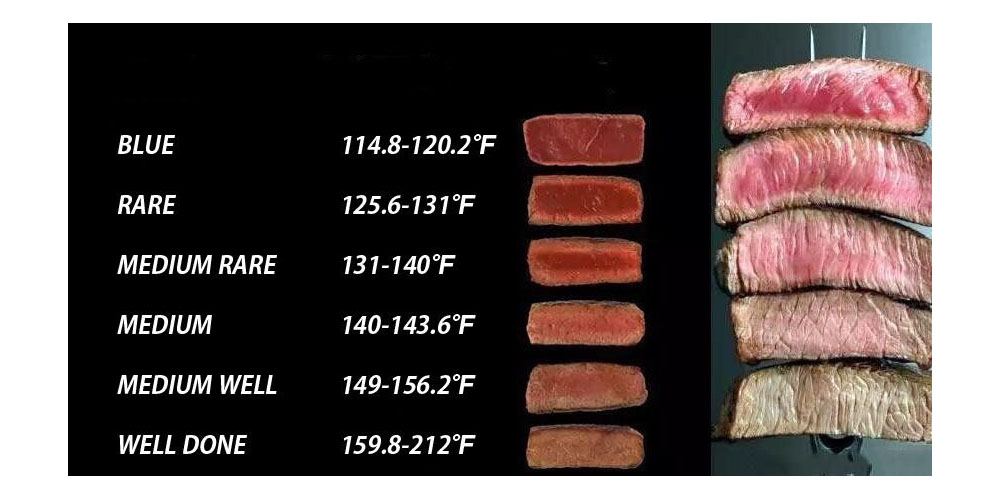Do you know that internal food temperatures are very important as far as appropriate cooking is concerned? Proper internal temperatures are the key determinants as to whether the food has been cooked properly or not. Maybe you depend on time estimates, you do not have to estimate anymore and take chances of eating uncooked food. For this reason, different foods have a temperature chart that indicates the different periods and the exact points to measure the temperatures. For example how much internal temperature do you need to observe for a traditional roast turkey let us interrogate them and see how each type of food cooks briefly.
Beef, Veal, and lamp Internal Temperatures
How do we measure temperature? The thermometer should be placed midway through the meat. You should avoid the bone. A well-cooked Beef, veal and lamb cook at 160 degrees F or 71 degrees Celsius. The meat has a uniform brown or grey appearance. For the case of brisket, it cooks at 165 to 175 degrees F or 74 to 79 degrees Celsius. You will know the brisket is ready if it pulls apart easily. The pot roast cooks at 180degrees F or 82 degrees Celsius. You will know it is ready if it pulls apart easily.
Poultry internal temperature
How will I measure the temperature of poultry products such as ducks, turkey and chicken among others? The innermost part of the thighs and wings is where you need to place the thermometer and the thickest part of the breast. These are the crucial areas that will enable you to know your poultry products are well cooked. Dark meat cooks at an internal temperature of 160 to 165 degrees F or 71 to 74degrees Celsius. This applied to breast meat, thighs, wings and legs. For the case of deep-fried meat, or the Cajun fried Turkey, the cooking temperatures run to 170degrees F measured at the thighs.
Pork Internal Temperatures
Just as in the poultry products, the thermometer must reach the midway of the meat without getting into contact with the bone. Well, cooked pork goes for up to 160 degrees F and above with a brown colour all through. Pork ribs cook for 180 to 200degree F or 82 to 93 degrees Celsius. Pork shoulders from 195 degrees F to 200degrees and briskets from 180 degrees to 200 degrees F. The raw sausages cook for 160 degrees F same case as raw Ham. Pre-cooked sausages and precooked Ham have internal temperatures of 140 degrees F or 60 degrees Celsius.
Fish and the seafood internal temperatures
Fish cooks for very low temperatures compared to other meats, hence you will need to be careful to avoid overcooking and burning too. Examples of these fish include Salmon, which cooks at 130 to 135 degrees F or 54 to 57 degrees Celsius. Halibut –cod-Red snapper-sea Bass- Tilapia cooks at a temperature of 130 to 135 degrees same case of Trout. Tuna swordfish-marlin cooks at 125degrees F. Shrimp cooks at internal temperatures of 120 degrees F. Avoid overcooking to ensure the meat does not dry up and lose flavour.
There is internal temperature measurement for all types of foods water included so all you have to do is know the type of food you cooking and the set temperature standards you should observe.

